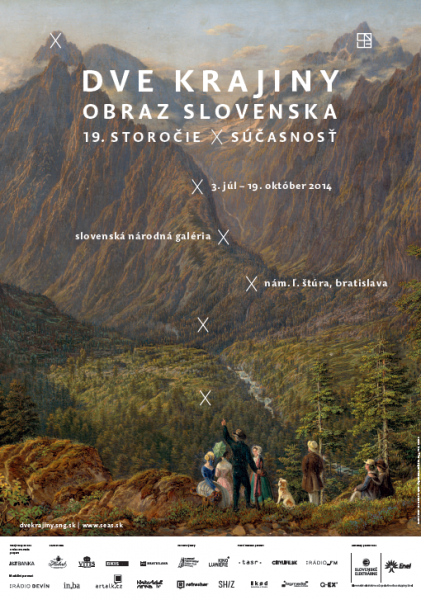The Slovak National Gallery exhibition entitled Two Landscapes / Picture of Slovakia: 19th Century # the Present Time demonstrates the transformations of Slovak landscape in 19th century art; it also shows how well contemporary art from the 1970s up to today acquitted itself when dealing with this theme. This multi-genre and trans-historical project comprised of abundant material (drawings, graphic artwork, photographs, paintings, sculptures and objects, installations, videos, actions and performances) shows the breadth and diversity of the depiction of the Slovak countryside as a topographically defined location, adapted and interpreted by 19th century artists as well as contemporary artists.
Since curators of two collections of the Slovak National Gallery participated in creating this exhibition, they have strived to combine traditional and non-traditional exposures of the historical genre of the landscape. The modern and contemporary art curators have chosen a subversive and to a certain extent divergent approach to this theme – exhibition; its material ground plan was built by their colleagues from the collections of old art and thus led its “double” reading in semantic and visual planes (the new in the old & the old in the new). This pictorial travel book throughout Slovakia of the 19th century, picturesque for its kind, represents a view from a distance of the end of the 20th century and the beginning of the 21st century. The thematically and topographically classified material composed of classical artifacts in ten sections (featuring themes of wandering through the countryside, towns in the countryside, castles, Danube views, land of regions, the Tatras, modernization, along with the artwork of the most prominent artists-landscapists) is commented on by entries – interventions – of contemporary art. This is based on the principle of contrast, paradox, travesty, through interventions in traditional and frequently repeated iconographic clichés established in the 19th century, and shifts in their perception from today’s point of view. A kind of exhibition in exhibition is created here, which, in addition to its “cognitive” and aesthetic aspects (how Slovakia looked in the past and the means by which it was depicted) also offers a current and to a certain extent alienating story of the countryside, and its depiction or more precisely expression (and thus existence) in the present. The beauty of the Slovak land is thus exhibited through a different syntax of contemporary art which is more appropriate for the sensibility of today’s visitor. While one group of contemporary artifacts preserves the “picturesque” and “romantic” tone of the 19th century works or “plays” with them polemically and sometimes humorously, the other group takes a much more merciless approach regarding the modernized countryside, and holds a mirror up to it with an ironic, critically detached point of view.
Thus, the story of the artistic journey throughout this beautiful land from the Tatras to the Danube (as Samo Chalúpka once described it) has led to an unexpected but apt and updated conclusion.

